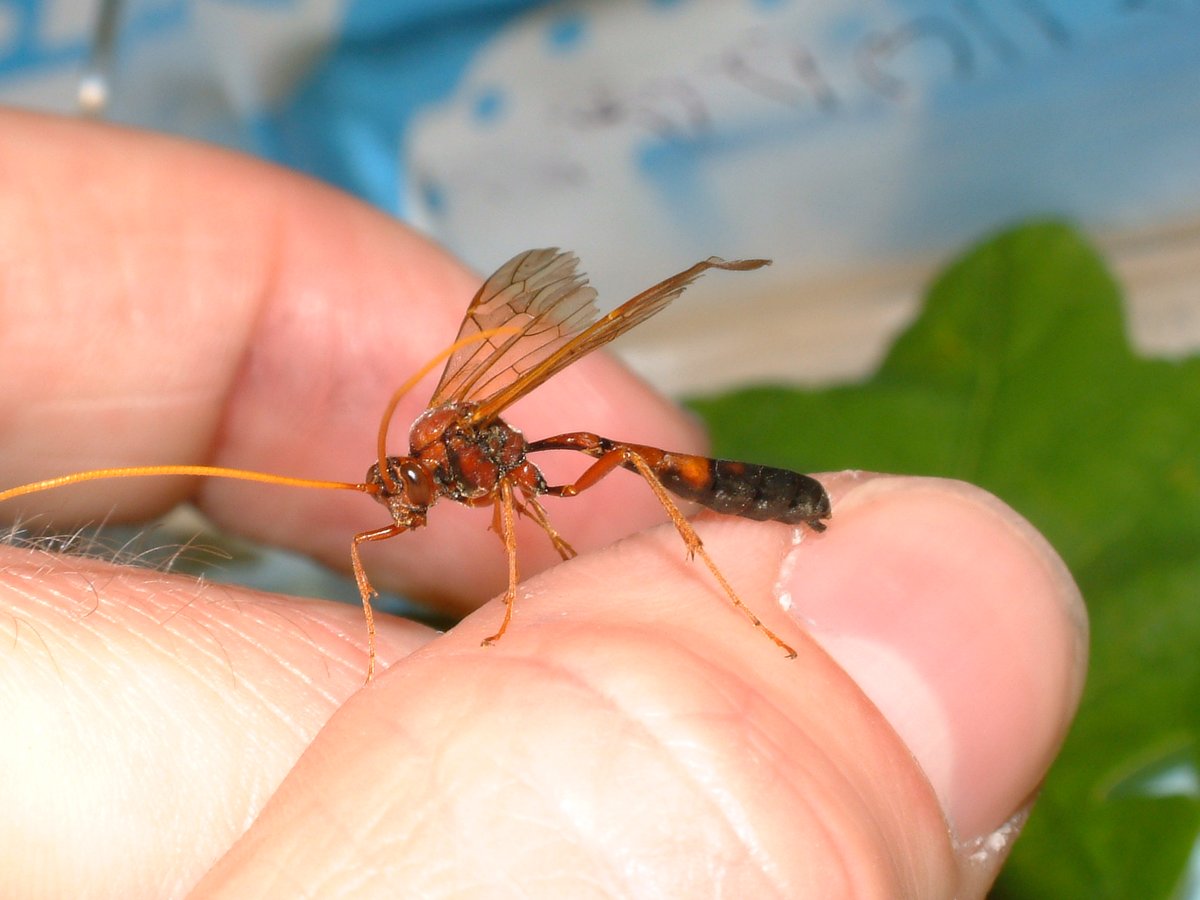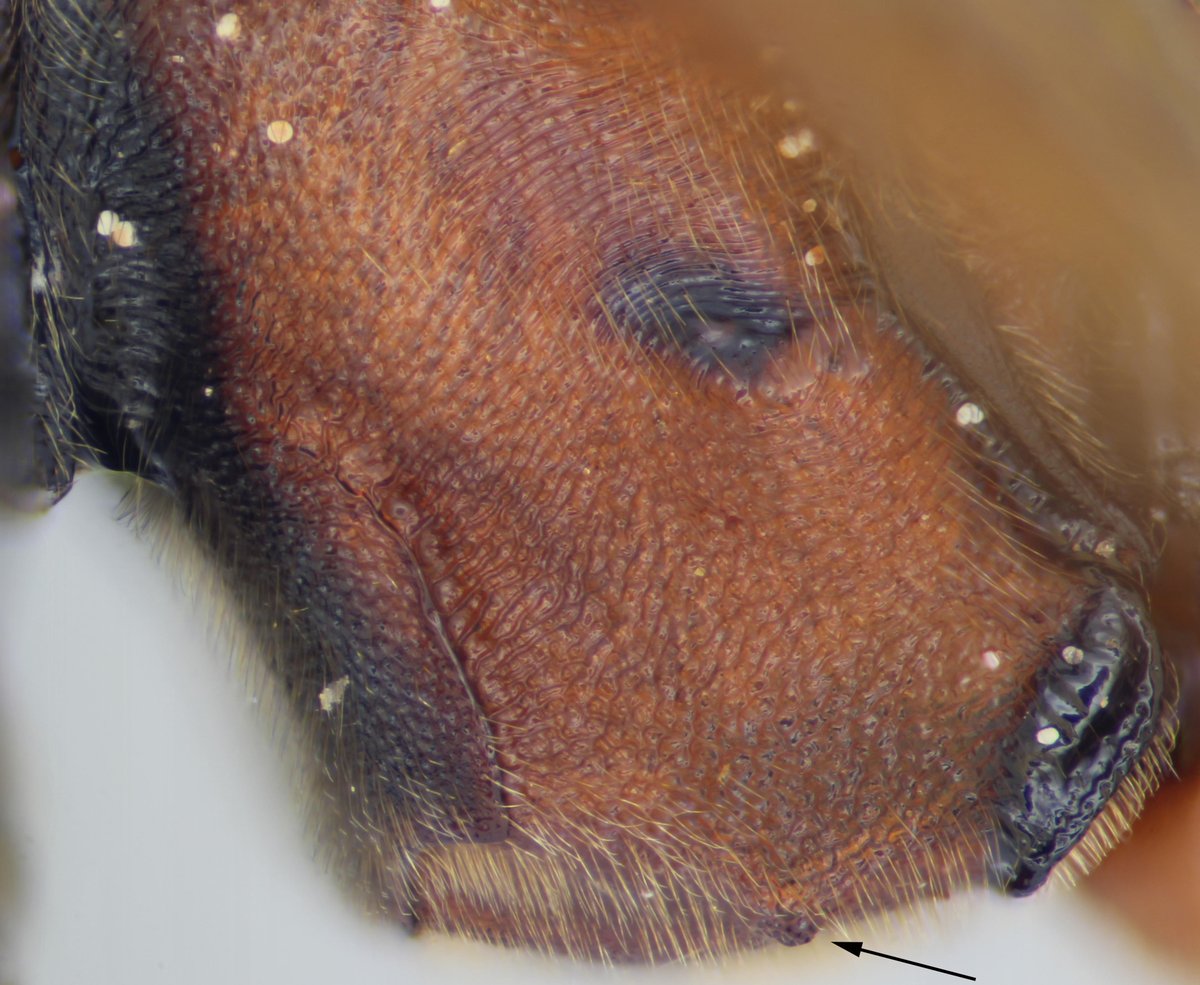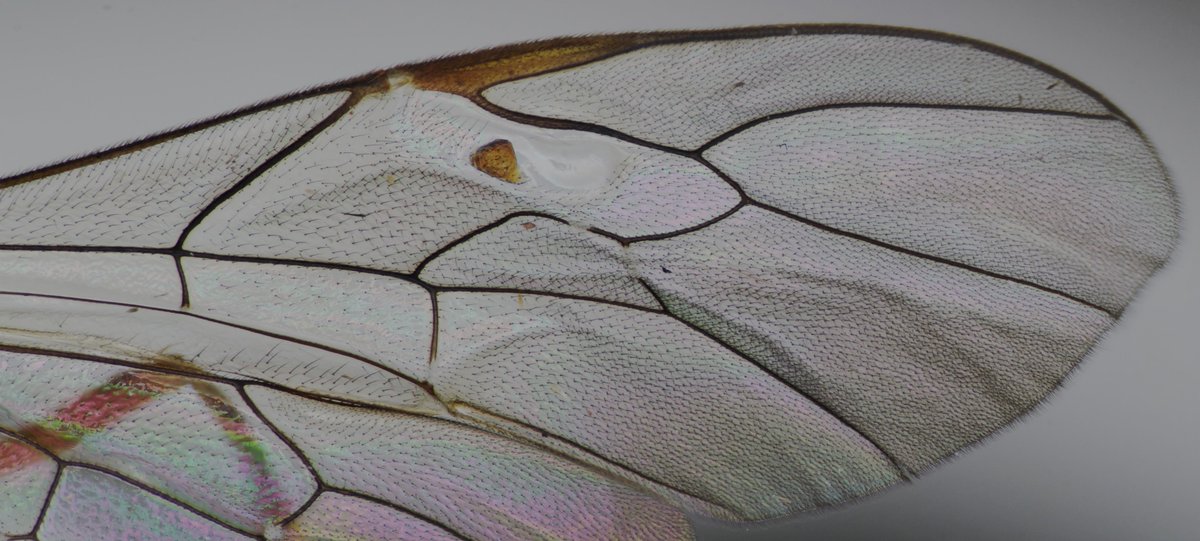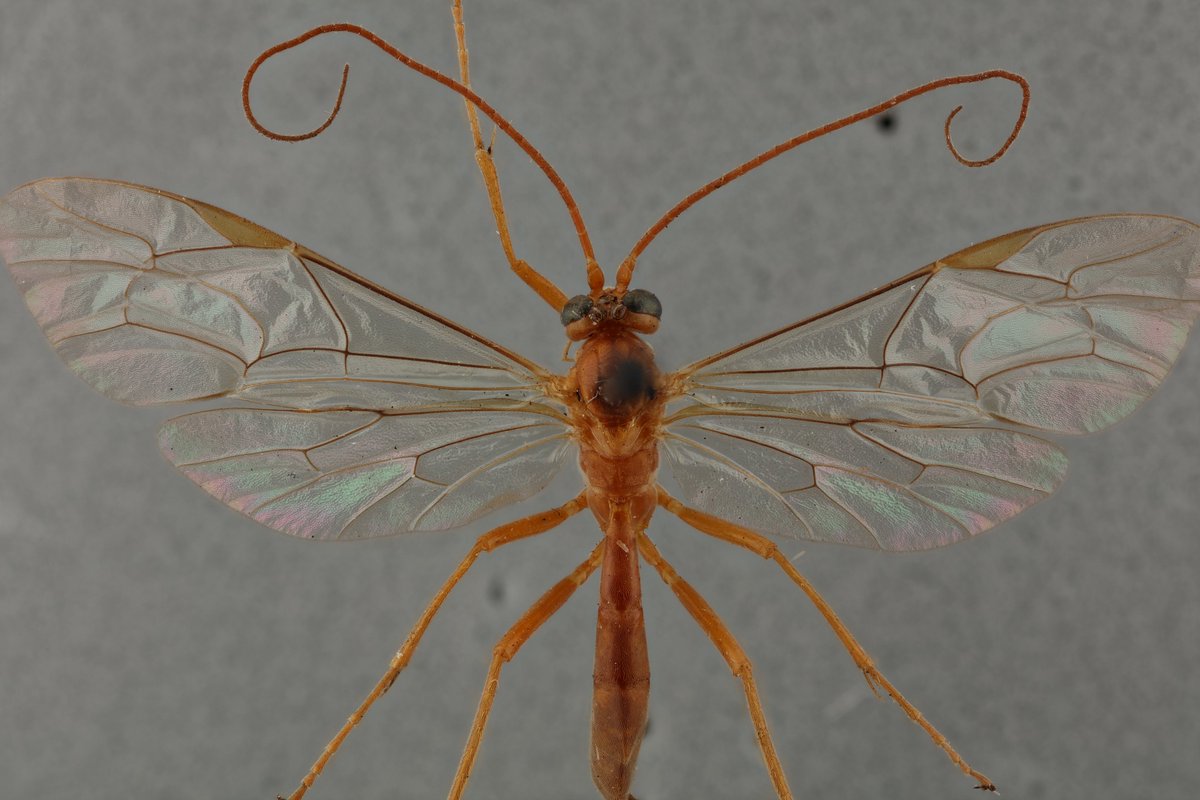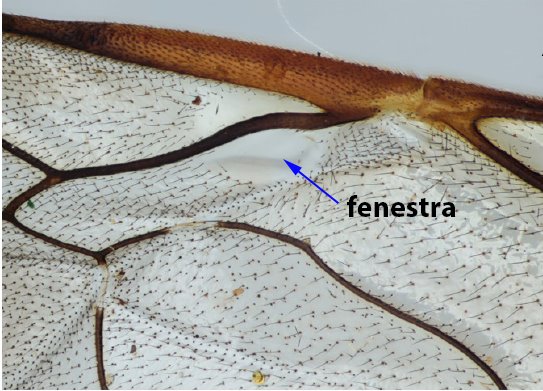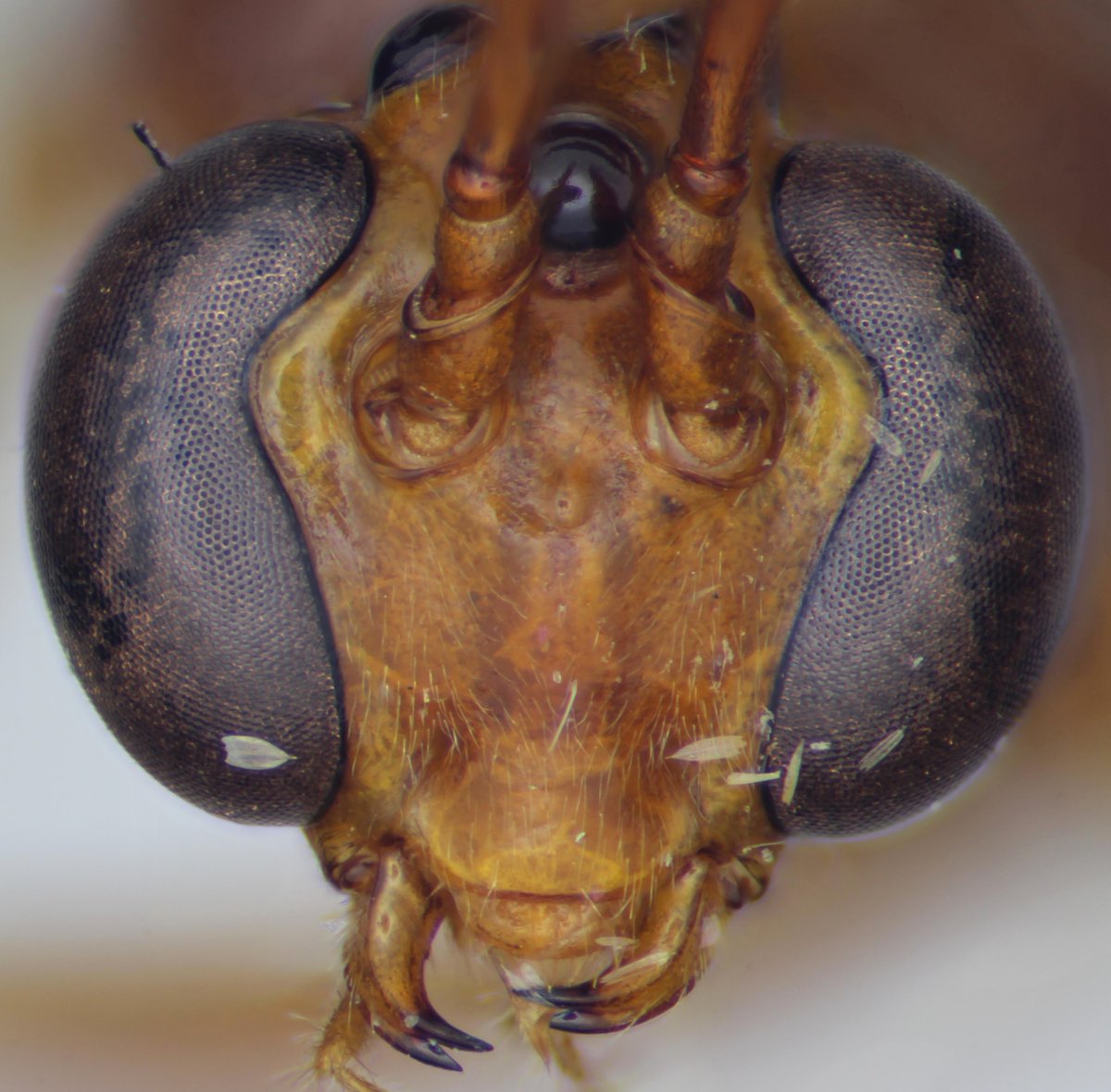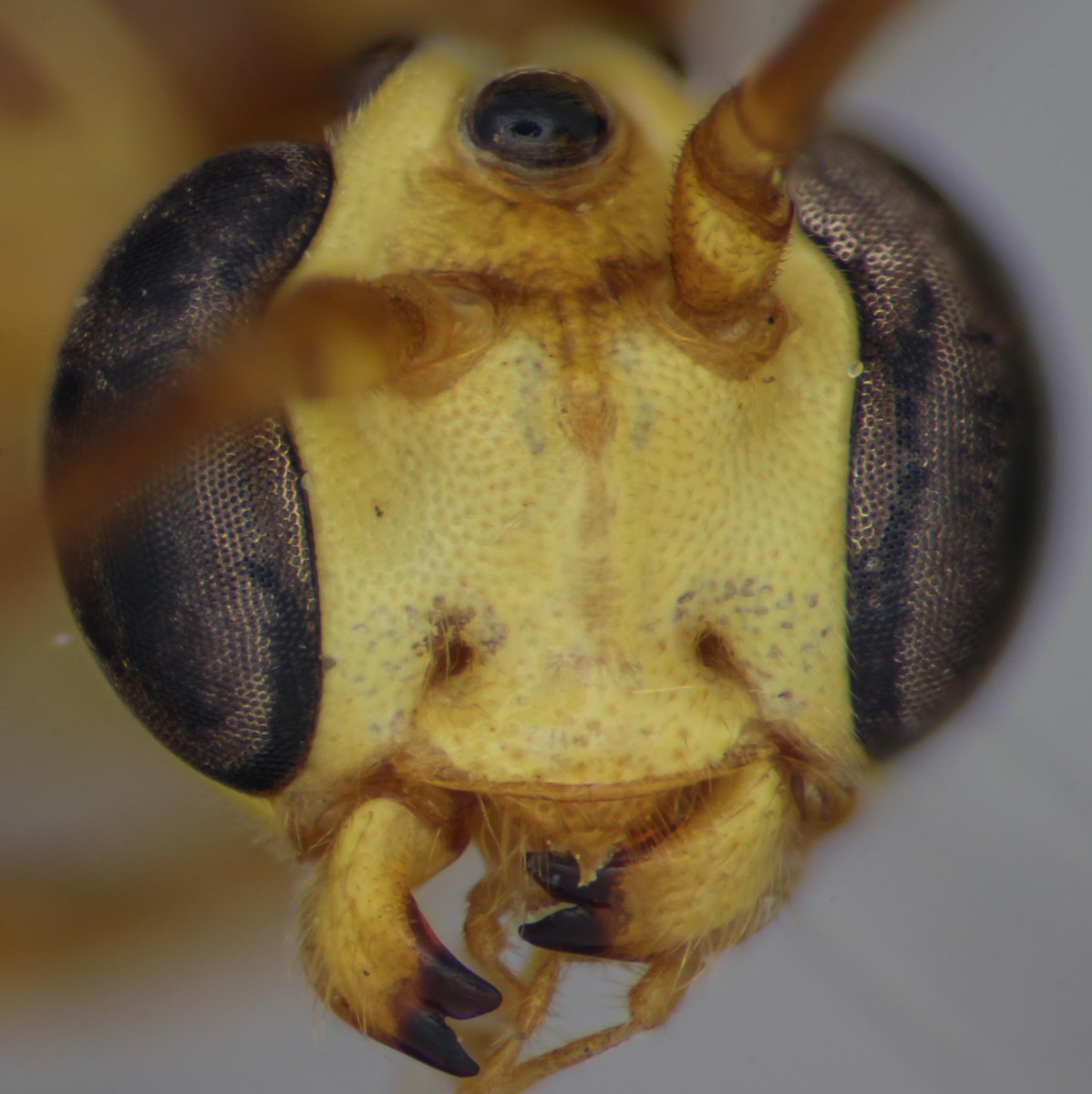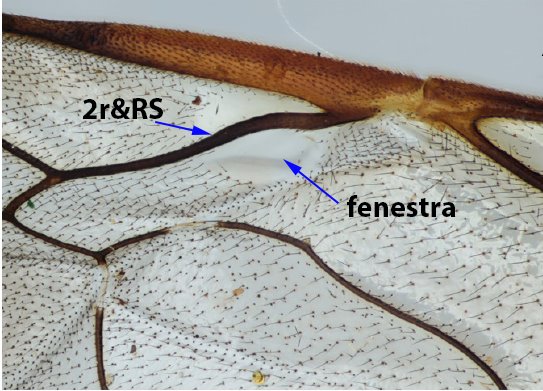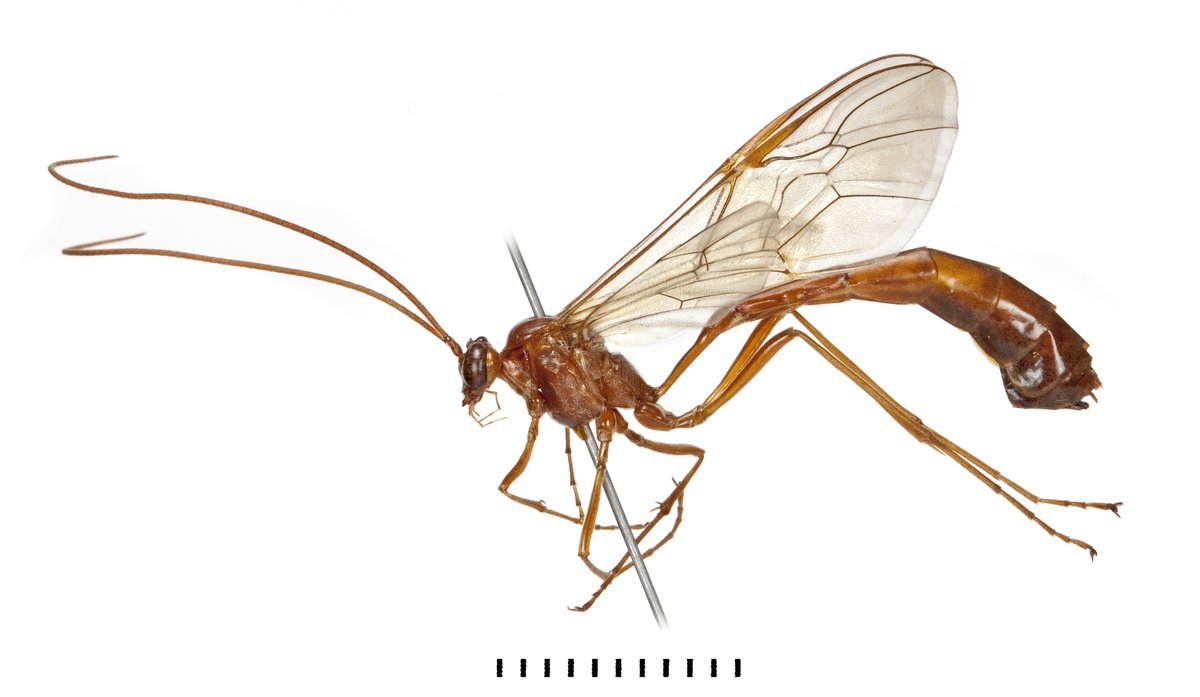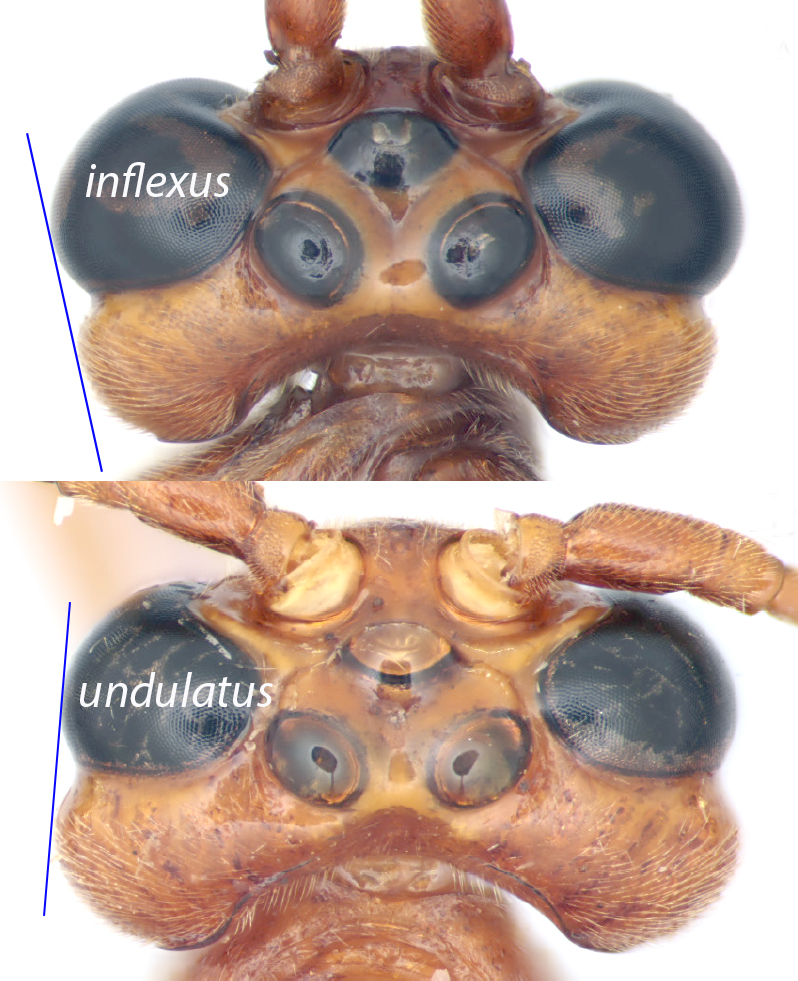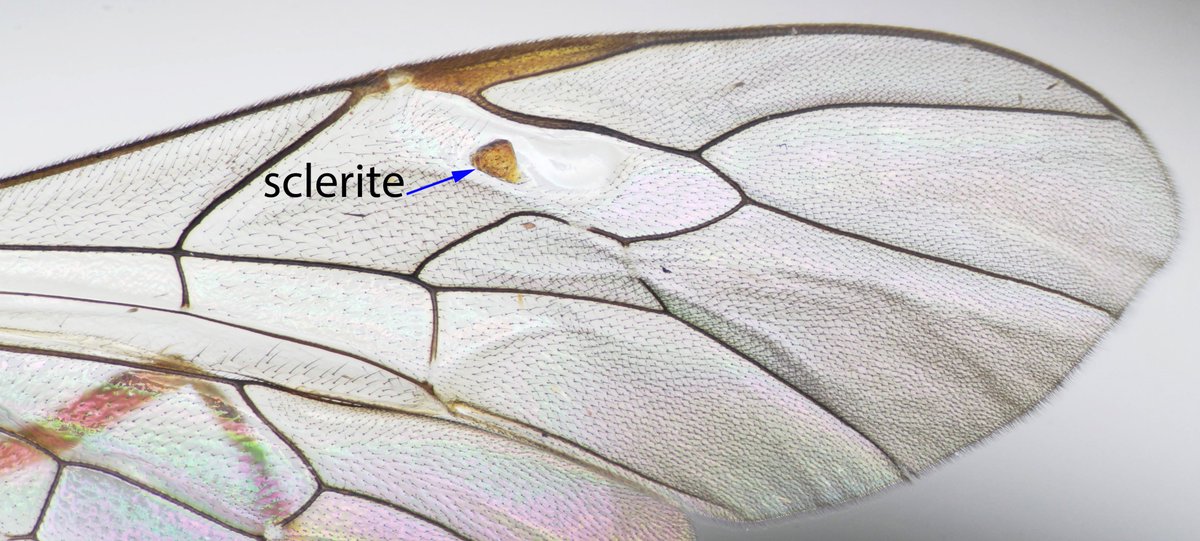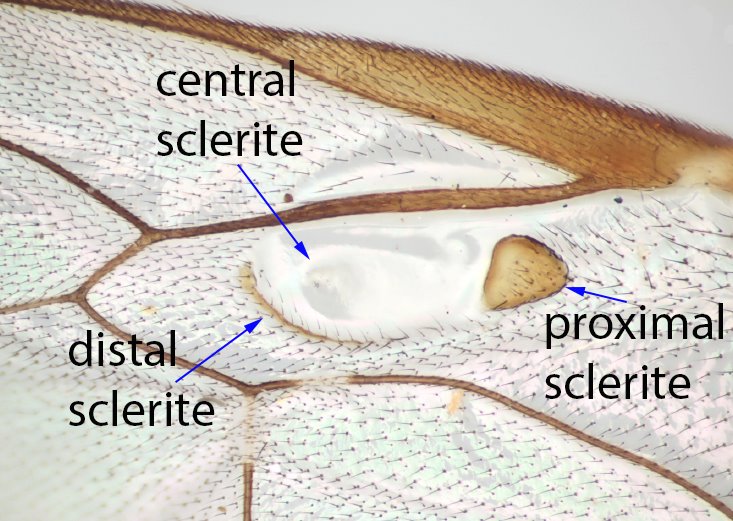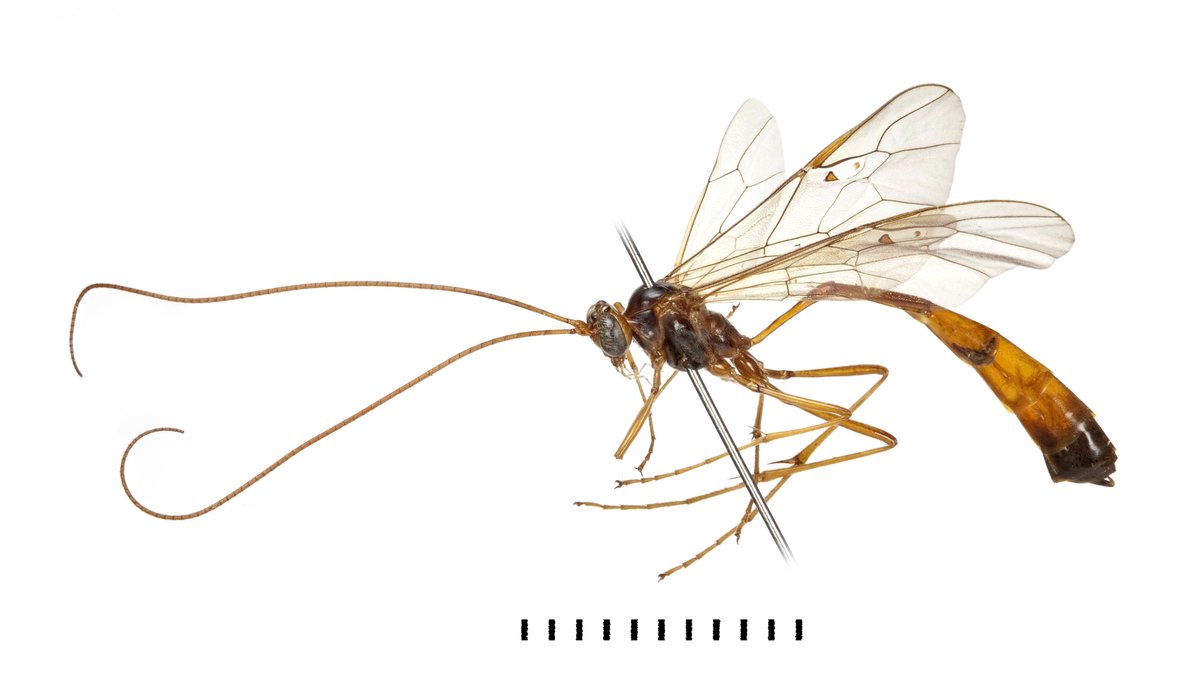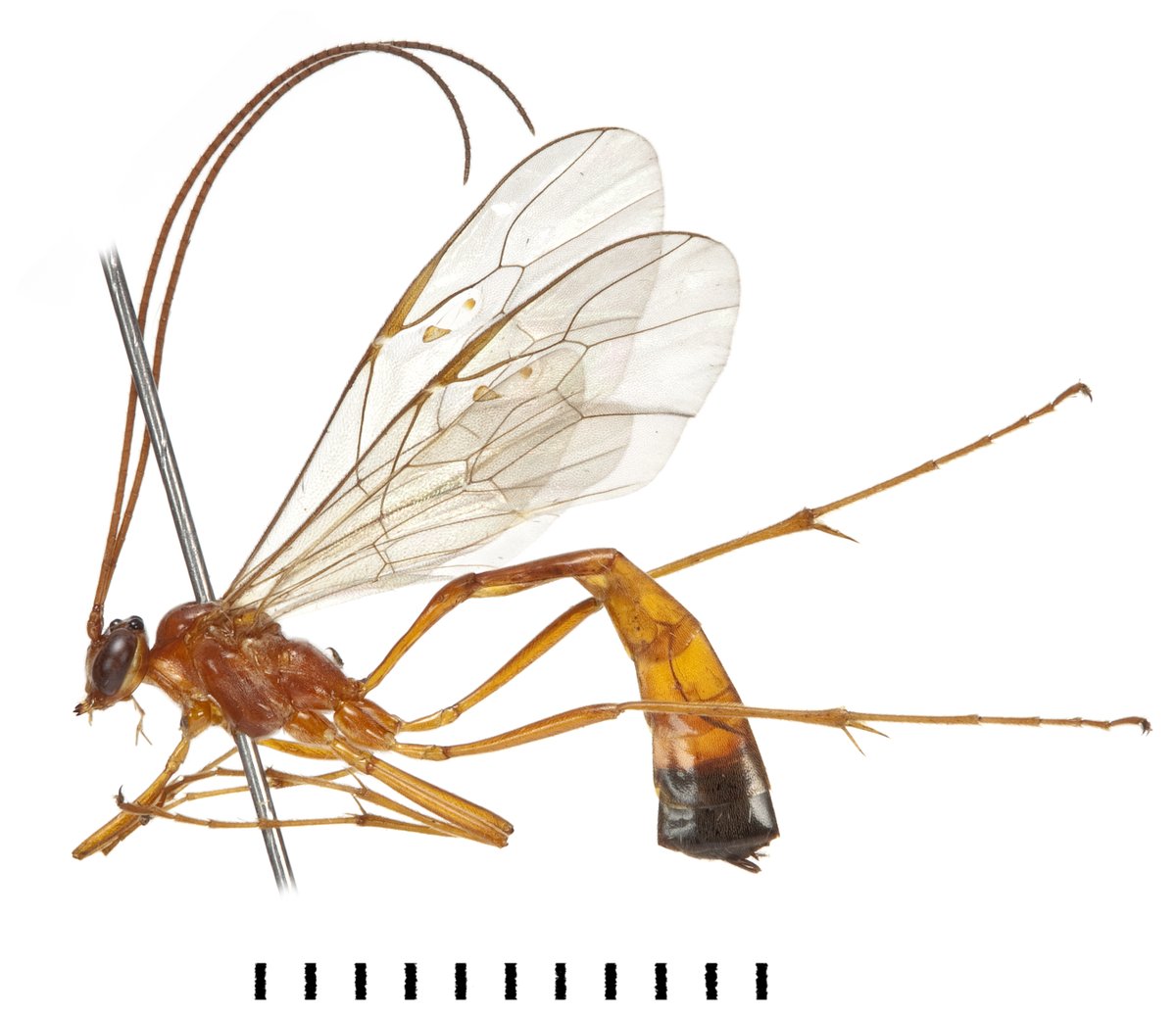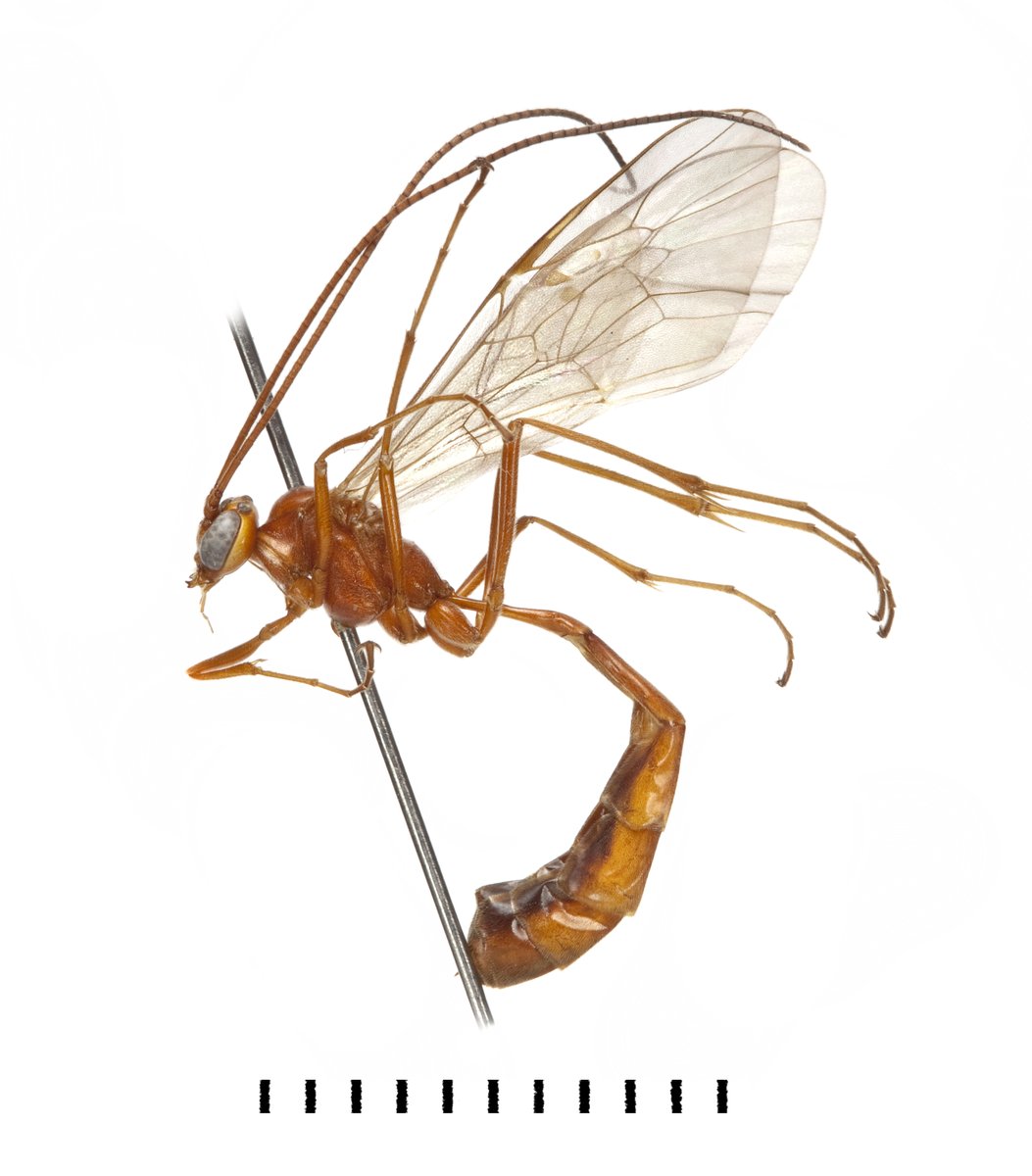Do you see these pale reddish wasps at light? Lovely looking nocturnal parasitoids, but they can be tricky to identify. Different groups of Ichneumonoidea have converged on the same sort of appearance. Here are some of the distinctive species [a thread]
First, is it an ichneumonid or braconid? Most braconids have a complete vein RS+M; no ichneumonids do (Braconidae above, Ichneumonidae below)
If it& #39;s an ichneumonid, does it have a discosubmarginal cell that extends beyond vein 2m-cu? Does it look a bit like a horse& #39;s head? If so, it& #39;s the subfamily Ophioninae.
Most other ichneumonids have the discosubmarginal cell ending before vein 2m-cu, as in this Netelia species.
Here are some distinctive ophionines to look out for. Stauropoctonus and Eremotylus have a distinctly angled vein 2r&RS (simply curved in Enicospilus and Ophion).
Stauropoctonus bombycivorus is large and distinctively patterned. A parasitoid of Lobster moth, previously seemed to be very rare but now reported regularly in the south [photo by Richard Bartlett]
Eremotylus marginatus has black markings and bright yellow antennae. Very localised but can be common. Easily confused with Ophion ventricosus, which is a little smaller and has typical Ophion fore wing vein 2r&RS.
Under the microscope, you can see the small projection on the lower part of the mesopleuron (middle part of thorax) of Eremotylus (marginatus and the even rarer E. curvinervis).
An ophionine with patches of cuticle (sclerites) in the discosubmarginal cell? Enicospilus: five species with distinct sclerites, one with a transparent sclerite and two with no sclerites.
More tomorrow! Unless you tell me not to... Meanwhile, here& #39;s an undescribed Netelia species reared from Biston strataria (Oak Beauty) in England. There& #39;s still much to find out.
A quick run-through of the UK Enicospilus species. They have that characteristic ophionine fore wing, but with a large bit of wing membrane lacking setae (or hairs), which is the fenestra.
Enicospilus also have very narrow mandibles. Compare Enicospilus repentinus (left, or top) with Ophion minutus.
Two Enicospilus are very large (body length a little over 2cm) and have a fenestra lacking sclerites, together with a very wavy vein 2r&RS. These are E. inflexus and E. undulatus, which are parasitoids of lasiocampid moths, Eggars.
Enicospilus inflexus is a reasonably widespread parasitoid of Oak (and Northern) Eggar, but I only know of 5 British specimens of E. undulatus, including some reared from Grass Eggar. Most recent specimen from 1975. Get searching! They are separated by the shape of the head.
One species, Enicospilus repentinus, has one sclerite in the fore wing. It has a restricted range in southern England (mainly Chilterns?), but is probably under-recorded.
The very similar Enicospilus merdarius inhabits sandy coasts where it& #39;s been reared from Sand Dart. Probably very under-recorded. Unlike repentinus it has a transparent central sclerite and a long distal sclerite.
Then we have a bunch of species with the proximal and central sclerites looking very solid. This group contains a couple of distinctive species and some decidedly trickier.
Two Enicospilus have distinctive colour patterns (the others are all uniformly testaceous). Enicospilus combustus has lots of black on the mesosoma (thorax) while E. ramidulus is testaceous but with a sharply black end to the metasoma (abdomen).
Enicospilus combustus is mainly southern and has been reared from Dot Moth; E. ramidulus is very widespread and a parasitoid of various noctuids in the shrubbery layer, but mainly Hadeninae.
Incidentally, we use mesosoma for many Hymenoptera because the first abdominal segment is fused to the thorax (as the propodeum); the metasoma is the abdomen minus the first segment.
The next bunch are very similar and basically look like this. They are Enicospilus adustus, E. cerebrator and E. myricae. Best to use the paper I wrote with Mark Shaw to separate these three: http://dx.doi.org/10.5852/ejt.2016.187.">https://dx.doi.org/10.5852/e...
Species in this group of Enicospilus look very similar and have been much confused. We described E. myricae as new species from Britain, since found in Sweden, where Niklas Johansson found some other new species, which we should look out for in Britain: https://doi.org/10.5852/ejt.2018.483">https://doi.org/10.5852/e...
Right, onto some other genera tomorrow!

 Read on Twitter
Read on Twitter![Do you see these pale reddish wasps at light? Lovely looking nocturnal parasitoids, but they can be tricky to identify. Different groups of Ichneumonoidea have converged on the same sort of appearance. Here are some of the distinctive species [a thread] Do you see these pale reddish wasps at light? Lovely looking nocturnal parasitoids, but they can be tricky to identify. Different groups of Ichneumonoidea have converged on the same sort of appearance. Here are some of the distinctive species [a thread]](https://pbs.twimg.com/media/EXgBO_yWsAAgGqM.jpg)
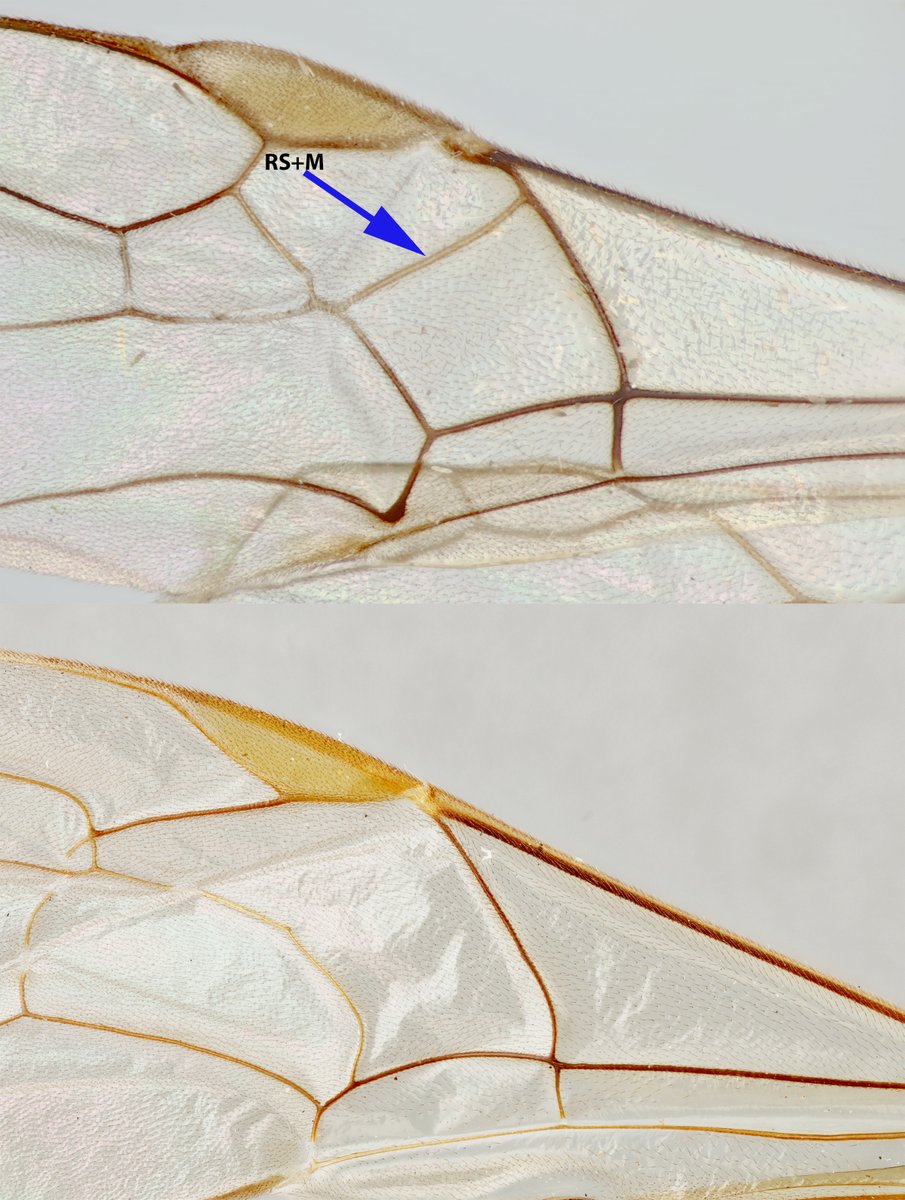
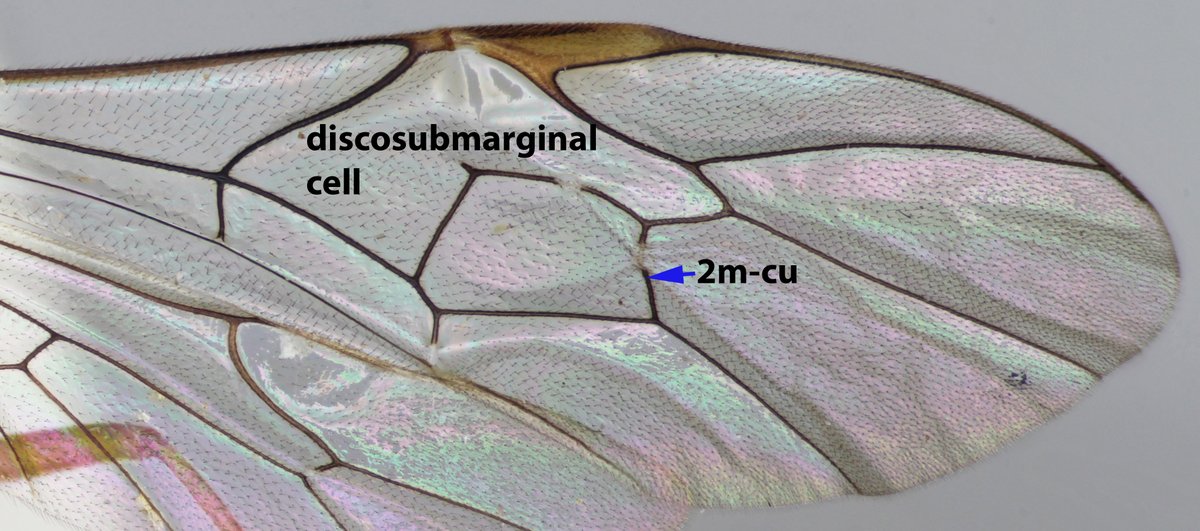

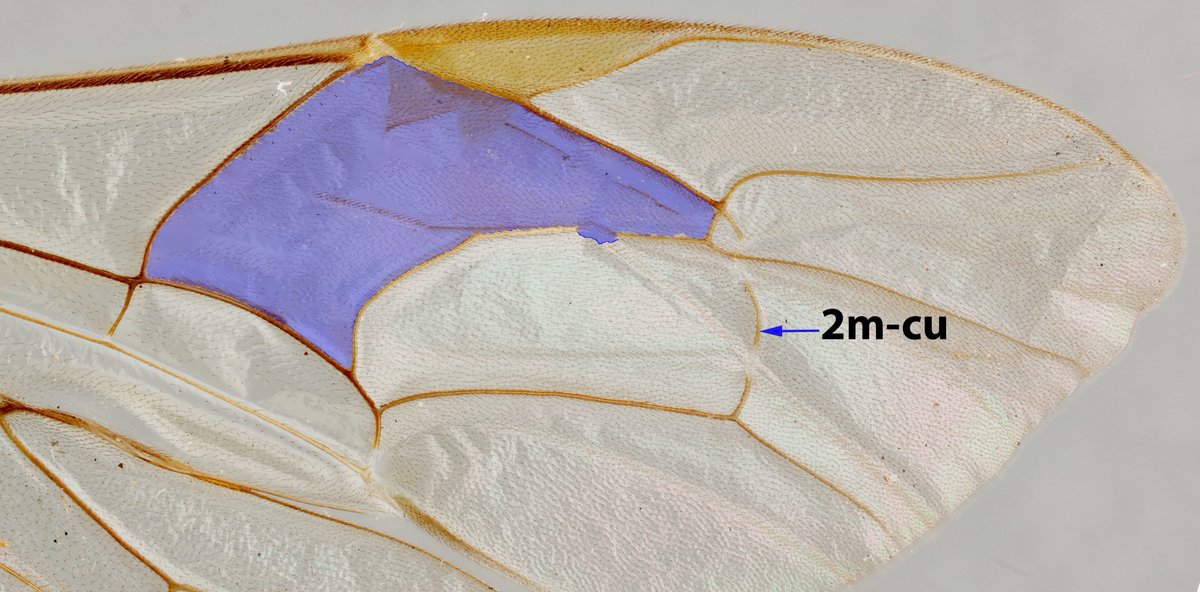
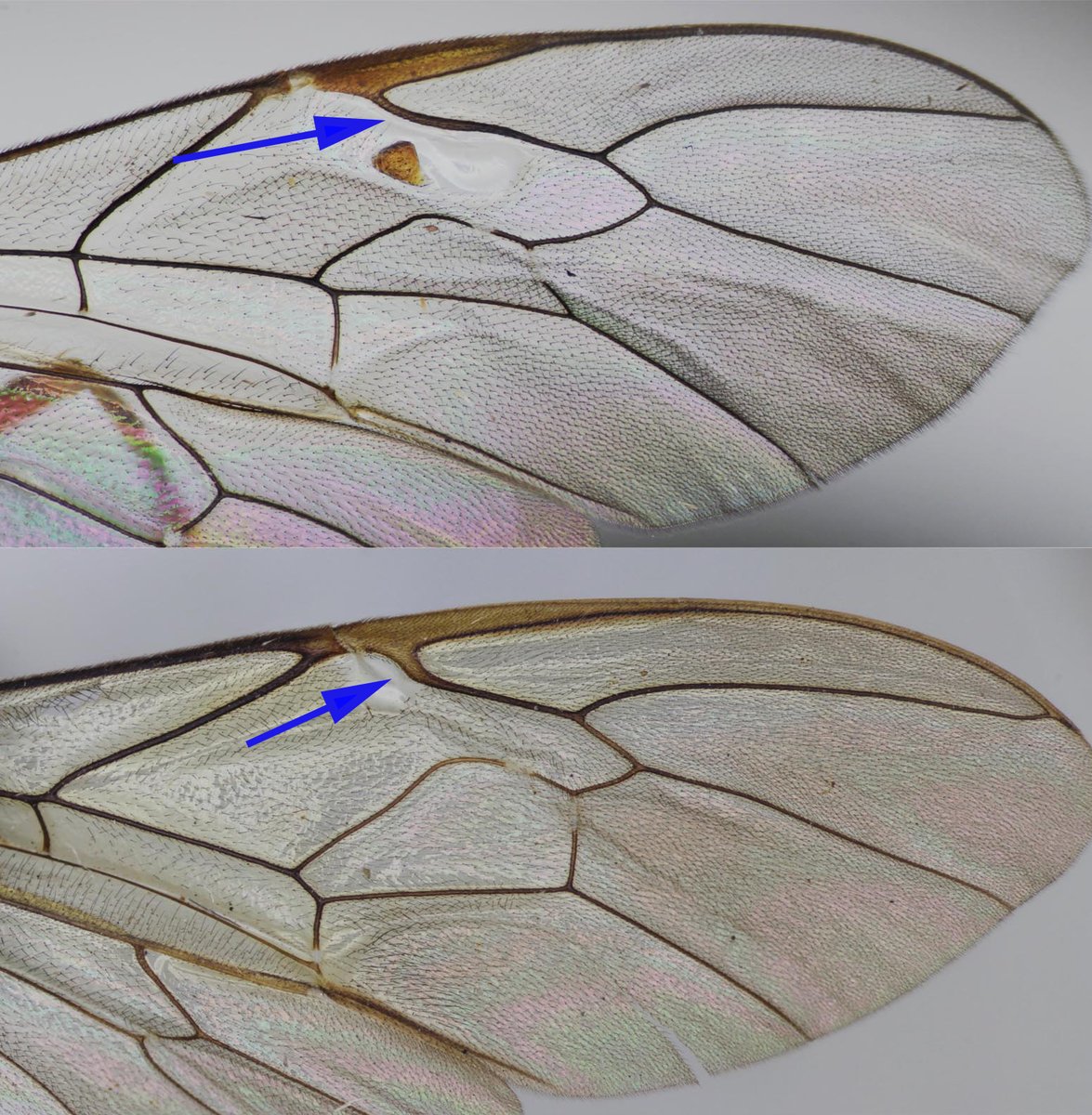
![Stauropoctonus bombycivorus is large and distinctively patterned. A parasitoid of Lobster moth, previously seemed to be very rare but now reported regularly in the south [photo by Richard Bartlett] Stauropoctonus bombycivorus is large and distinctively patterned. A parasitoid of Lobster moth, previously seemed to be very rare but now reported regularly in the south [photo by Richard Bartlett]](https://pbs.twimg.com/media/EXg5eLNWsAEhMaG.jpg)
